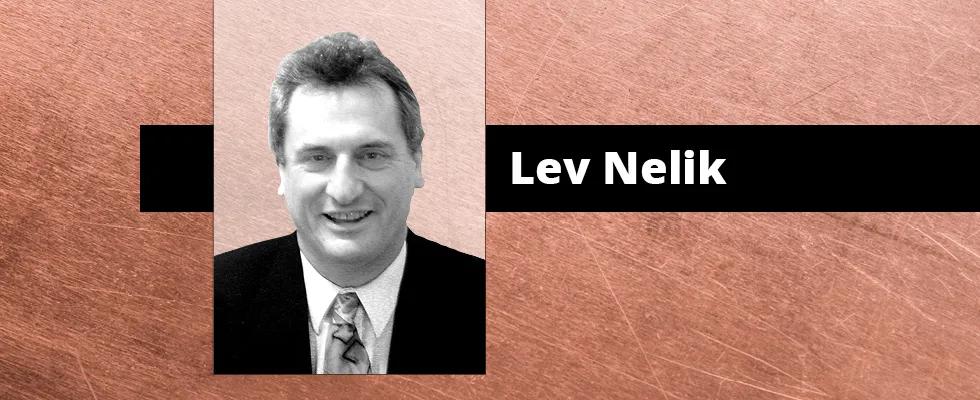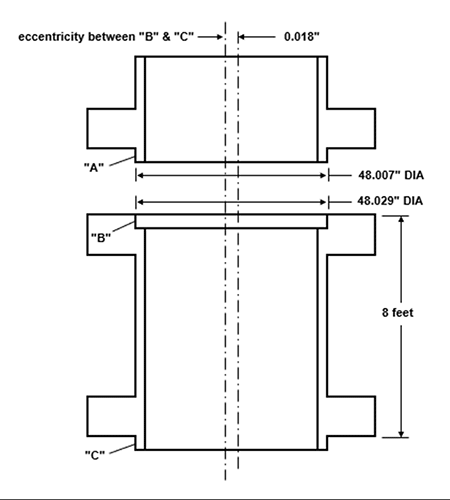
I received good feedback on Part 1 of this article, published in March in Pumps & Systems. Many expressed great relief that finally, after years of the process of pumps repair being a dark art, there is a structured document—a repair standard—in which different levels of repair can be applied. Repair bids have become consistent and clear, enabling end users to receive repair/upgrade quotations from multiple bidders without fear that some important quality steps simply did not make it to the bid quotation in order to artificially keep the quoted cost down.
DR. PUMP:
I just read your VPRS article in March 2023 Pumps & Systems. I have been beating on the vertical pump concentricity drum for years! With OEMs now outsourcing large pump components (i.e. head, columns, bowls, etc.) to third parties, they have essentially become assembly and test facilities.
As you stated, checking the large components is extremely difficult once off the lathe. In one case, I actually hired a third-party company to go into an OEM shop to take some measurements on some large columns (FARO laser tracker.) The OEM jokingly said I was wasting my money but changed their tune after we found a concentricity issue!
Where can I get the VPRS standard? I checked IHS, and it did not come up.
Howard Koop, P. E.
Engineering Specialist
LP Operations Engineering
Edmonton, Alberta, Canada
DR. PUMP:
Dr. Lev Nelik, I read your latest P&S article referencing VPRS, Rev. 1B Standard concentricity issues. Thank you for addressing another educational and relevant topic.
My only hang-up concerns the Image 1 depiction of a 48-inch column. It reminds me of and resembles a solid-shaft motor spacer coupling. I had earlier conveyed this in some VPRS feedback comments.
I put together a drawing (Image 1 in this column) for your consideration that might better resemble a 48-inch column.
Lee Ruiz
Oceanside, CA
DR. PUMP:
Thinking of purchasing this standard. My specific issue is with a 14-stage, 400 horsepower (hp) vertical can pump with a 10-inch bowl. Your article in March 2023 listed this standard for over 500 hp and 12-inch bowl pumps. Will this standard work for me?
Our issue is with these pumps’ short seal life, and we also have vibration levels that are barely acceptable when pumps are installed and running.
Phil Mix
Engineer IV, Reliability
HF Sinclair Co.
Thank you all for your feedback and support for the VPRS ideas and notes. Yes, indeed—the subject is important and beginning to get more appreciation since the release of the VPRS specification last year and through Pumps & Systems’ promotional efforts.

Regarding your question about how to get my book, it is available on Amazon. It was published at roughly the same time my recent book “Pumps and Pumping Systems - Made Easy and Fun” (three volumes)
was published (also via Amazon). Please note that, as some of you asked, the standard is not limited strictly to large pumps over roughly 500 hp. Its benefit is just as relevant to smaller pumps, as it affects their life the same way, but the cost of neglecting it is obviously greater for larger units.
Also, if you are interested in being on the VPRS advisory committee, let me know. We will soon start preparing the next revision, based on the feedback we have been receiving and additional standard cleanup. For example, Lee Ruiz’s drawing (Image 1) mentioned in his comment above will replace the original draft sketch in version of the standard.
In this article, we will expound further on the various levels of repair, per four major categories:
- basic repair
- extensive repair
- overhaul
- upgrade
Basic Repair
If a small vertical pump (VTP) has been in relatively short service (less than five years) pumping clean water and develops a problem, such limited repair can be justified since most of the parts will not have much wear. A repair would consist of replacing or repairing the worn components, such as the bowl shaft, bowl bearings and minor machining to repair the worst of the worn components or fits. This is typically the least expensive of the options.
Extensive Repair
An extensive repair would consist of a typical repair as described above with considerable machining of the existing bowl and impellers to regain factory tolerances in the wear ring area of the bowl and impellers, flame spraying of shafts to regain original diameters and buildup of worn components using epoxy compounds and/or coatings. This can be expensive and may not be justified in bowl assemblies less than 16 inches in diameter due to the relatively low cost of new bowl assemblies.
Overhaul
Overhaul may also be termed remanufactured. In this instance, the entire pump is examined, and any wearing parts, such as bowl bearings and line shaft bearings, are replaced. Any worn shafts (impeller or line) are replaced. Impellers and bowls are either replaced or brought back to factory tolerance.
If an impeller is worn on the leading edge or vanes, it is typically replaced. If the bowl is worn in the wear ring area, it is machined and fitted with a wear ring. If an impeller is worn in the wear ring area but is okay in the vanes and shrouds, it is machined and fitted with a wear ring to regain original clearances.
In an overhaul of a VTP, the pump is returned to factory-new condition. The costs for this vary depending on the size of the bowl, but typically, an overhaul is anywhere from 50% to 60% of the cost of a new pump and will last as long as a new one. The rule of thumb for evaluating an overhaul versus a new pump is if the overhaul exceeds 75% of the cost for a new pump, go with the new pump.
Upgrade
Upgrade has two definitions. It is possible to upgrade a pump by changing the bowl assembly to deliver a new design condition, or you can upgrade an existing pump with new materials of construction, features or design condition. When considering a change in materials, one should consider how much life one received from the original materials. If the original materials lasted 20 years or more, it will be hard to financially justify the upgrade.
If the pump shows signs of wear in five to 10 years and upgraded materials will extend the life to 20 years, it is easy to justify upgrades to the bearings, bearing journals, shaft sleeves and wear rings, considering the expense of pump removal.
In upgrading a pump for a different design condition, one should evaluate the cost of modifying an existing bowl assembly versus new. If a declining aquifer or reduced well production is causing the design flow to reduce and the new condition can be obtained by trimming the impellers, the cost is relatively low and makes economic sense.
If conditions necessitate additional flow or head that will require either larger diameter impellers or additional stages, the costs increase significantly, and it may justify the purchase of a new bowl assembly. Depending on the bowl size, it may be less expensive to purchase a new bowl than purchase parts to upgrade or add additional stages.
If upgrading for performance, newer and more efficient bowls and motors may be available that will reduce energy usage and operating cost as well as help offset the cost of the upgrade. Some utilities will even provide incentives for improving the energy efficiency of the pumping equipment.
When considering the extent of repairs needed, take into consideration the service life of the pump. If it is over 20 to 25 years, you can typically expect to replace everything rather than repairing or overhauling. After 25 years, any wearing parts will be approaching or will have exceeded the intended service life, and any non-wearing parts, such as the column pipe and discharge heads will typically be corroded or eroded enough to warrant replacement. The motor will have exceeded its predicted service life and more efficient motors may be available. In the next article, we will have a brief excerpt from the VPRS standard, noting the general approach within each level of repair.

